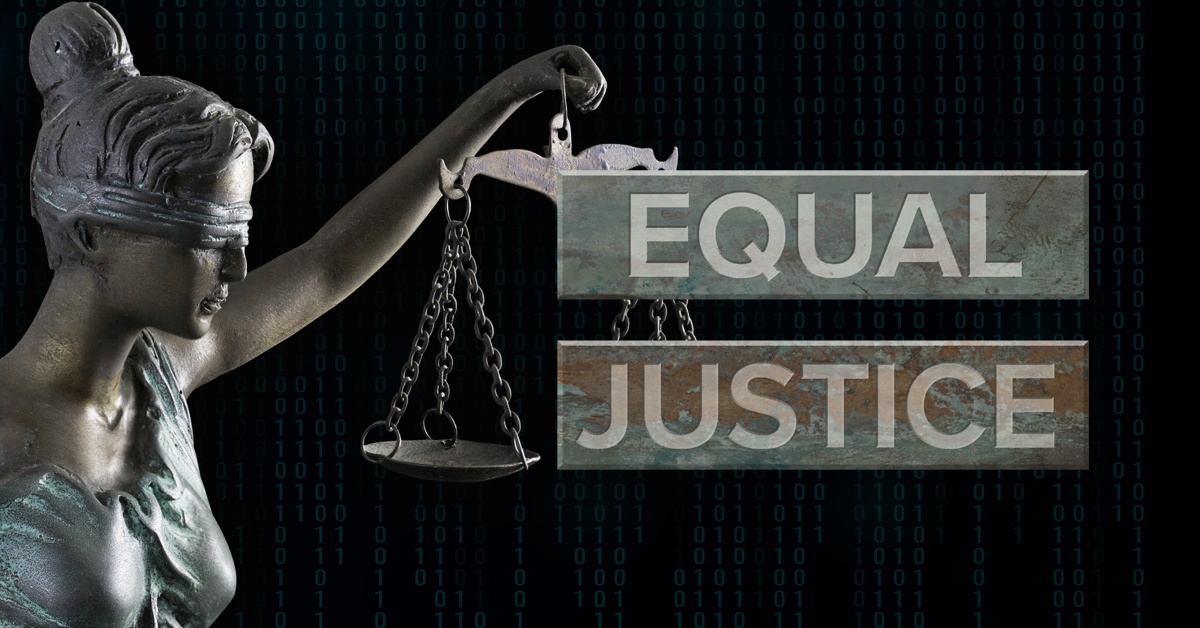A wave of lawsuits over appraisal bias puts an unwelcome spotlight on real estate valuations. For mortgage lenders, it’s about more than legal trouble. It’s about maintaining trust by keeping appraisals accurate and credible for every homeowner.
This is an industrywide issue, not an isolated incident. Appraisal methods need significant changes to address discrimination and bias. The situation calls for getting ahead of problems by integrating better, more efficient systems to ensure appraisals reflect actual property condition and quality values.
Take the Santander Bank lawsuit. A Connecticut couple accused the bank and its appraiser of undervaluing their property because they are an interracial couple, according to Law360. The bank’s appraiser valued the property at $780,000 and denied the application for a refinance. The couple ‘whitewashed’ the home — removing all family photos or references to Black culture — and went to another bank that valued the home at $1.2 million.
The bank and the couple came to a settlement agreement in December. Terms of the settlement were not disclosed. Whether intentional or unintentional, varying appraisals can mean big money differences in real estate deals.
The mortgage industry needs to shift toward more standardized, objective appraisal methods. When valuations vary by hundreds of thousands of dollars, it raises questions about human appraisers’ vulnerabilities to bias and how that affects fairness. This type of case should force soul-searching on the mortgage industry’s part. The business should encourage measures to prevent bias and ensure equitable valuations.
Ethical lending
Getting appraisals right is central to ethical real estate and fair lending. The subjectivity in older methods often causes inconsistencies. Appraisers are human, and when they interpret various factors — location, quality, condition and market trends — differing views are created based on their own life experiences.
Even when unintentional, this variability can mean similar properties are inequitably appraised for different values, undermining fairness in deals. Recognizing this issue, the industry is exploring advanced tech tools that minimize human error and enable objective, accurate valuations. The goal for everyone should be to ensure the removal of bias from the equation.
Lawsuits over appraisals have made fair lending a prime focus for lenders. These cases aren’t one-offs but red alerts to scrutinize their practices. Another high profile case was written about in The New York Times.
A John Hopkins University history professor and his wife, then a faculty member at the university, who are both Black, purchased their home in Baltimore for $450,000 in 2017. When they attempted to refinance the property in 2022, an appraisal company valued the home at $472,000, or just $22,000 more than the initial price. They ordered a second appraisal, removed family photos, and had a white male colleague stand in for them. The appraisal came in at $750,000.
The history professor and the estate of his wife, who died earlier this year, settled the case this year with their mortgage lender LoanDepot. The mortgage company denied wrongdoing but announced commitments to provide additional resources to its clients in the appraisal process. In the face of headlines like these, lenders must meticulously review their appraisal processes to defend against bias claims.
Beyond legal costs, non-compliance with appraisal standards risks huge fines, massive lawsuit settlements and irreparable reputation damage. As regulators grow stricter, just checking the box isn’t enough.
The industry must be proactive with innovations that tackle bias at its roots. Otherwise, the financial hits could overwhelm businesses. Mitigating risks requires a fresh approach to reviewing appraisal processes and integrating objective valuation methods.
Systemic bias
Systemic bias is ingrained into long-standing industry practices, often unintentionally causing group disadvantages. Fixing it takes digging deep to identify and correct policies that enable inequality.
Bias manifests in subtle yet impactful ways within the current appraisal system. For example, structural racism causes ripple effects in home valuations when comparable sales of undervalued minority-owned properties are used. Unchecked, this creates and perpetuates discriminatory feedback loops that exacerbate economic inequality. Left unaddressed, algorithms trained on this historical data inherit these same biases.
Well-meaning appraisers may also inadvertently rely on racial stereotypes, neighborhood demographics and personal experiences in subjective judgments that illegally influence the values assigned. In select cases, some deliberately exploit their position to discriminate against people of color applying for a mortgage or a refinance.
Intentional bias — straight-up discrimination — is easier to spot, but equally damaging. Eradicating it starts with strict conduct policies, training programs and ethical reinforcement. Both issues demand comprehensive steps like reforms, education and technology focused on impartiality in appraisals.
While intentional discrimination necessitates decisive disciplinary action on individuals, systemic and unintentional biases fuel the calls for reform. A diversity of perspectives is critical in these complex reevaluations of existing appraisal frameworks. Simply put, leaving assumptions unchallenged risks harming marginalized communities.
Image-recognition tech
Fannie Mae is beginning to use image-recognition technology to analyze ratings appraisal reports, a significant advance toward impartial appraisals. This technology is also called computer vision, a field of artificial intelligence that trains computers to interpret and understand images. By tapping into advanced imaging and machine learning, computer vision delivers consistent, automated analyses that circumvent human biases.
Early findings suggest the tech can significantly reduce appraisal errors and limit bias influence. Adopting computer vision could be a game changer for accurate, fair property valuations. It has serious potential to transform the process toward unbiased assessments.
Before embracing image-recognition technology, Fannie Mae analyzed over a million appraisals using image recognition technology to compare appraisal reports. Its focus was on interior photos of comparable properties to determine condition ratings.
Fannie discovered that the technology could identify appraisal defects with 98% accuracy. Perhaps more importantly, computer vision uncovered “many defects that were previously impossible” to detect. That translates into incorrect condition ratings, which leads to missing or faulty adjustments to comparable sales. The result is unsupported, inaccurate appraisals.
With new standards strongly advocating computer vision adoption, Fannie Mae and Freddie Mac signal a major shift toward embracing technology. As more companies implement the guidance, the industry inches toward consistent evaluations powered by tech. This not only stresses accuracy and fairness but also curbs litigation risks from appraisal disputes to support ethical lending.
The updated guidance puts tech at the center for minimizing subjective biases and enabling objective appraisals. It could profoundly impact the sector by setting a precedent for property valuations and lending practices.
Transformative impact
The artificial intelligence underlying computer vision leverages neural networks modeled after the human brain. Through deep learning applied to massive, labeled datasets, these networks can “learn” to analyze visual information much like human eyes and brains intuitively process scenes.
Computer vision processes visual data with exceptional accuracy at superhuman speeds. Using complex algorithms, it can identify, classify and analyze images to mimic human vision with amplified precision. For property appraisals specifically, it assesses structural attributes, conditions and other variables with remarkable consistency. Tiny issues like minor cracks or wear, often overlooked by the human eye, are no match for computer vision’s meticulous image processing.
By rapidly digesting giant image sets, computer vision also enables appraisal efficiency at scale while upholding detail quality. This combination of breadth, depth and speed in analysis is invaluable for reliable appraisals.
By turning images into measurable stats, computer vision powers fact-based, unbiased appraising. It essentially eliminates human subjectivity for valuations grounded in hard data. For an industry long plagued by inaccuracy and bias, computer vision provides a reliable solution that raises the bar.
With valuation firms already integrating computer vision, its transformative impact is underway. These early adopters enjoy increased speed and precision while pioneering the technology’s path. As they report successes, they’ll likely propel wider adoption across the sector as others realize the benefits firsthand. This shift will cement computer vision’s place in standard, state-of-the-art appraisals centered on fairness and impartiality.
Major appraisal companies, appraisal software providers and appraisal management companies are pioneering innovative solutions for valuation professionals, becoming early adopters and industry advocates of computer vision. Modernizing the appraisal process is why these leading companies are leveraging AI to improve quality control processes and reduce or eliminate biases.
Public confidence
Adopting computer vision can ensure appraisal accuracy by limiting human inconsistencies. In an industry where slight mismeasurements carry financial weight, the precision of computer vision technology protects its credibility.
It also mitigates legal disputes that can ignite over appraisal technicalities. By leaving less room for doubt or interpretation, computer vision appraisals hold up against scrutiny.
Additionally, computer vision reports inspire stakeholder confidence with their data-backed objectivity. Property owners, investors and lenders can trust the evaluations are impartial and ironclad. This trust enables smooth property transactions and industry stability.
The penalties around unfair lending exceed the price of compliance. As computer vision evolves into an appraisal solution balancing accuracy and efficiency, it could profoundly improve the real estate landscape. Within five years, blending human regional expertise, machine precision and enhanced data may be the key to transforming public confidence, expanding home valuation accessibility and increasing fairness.
More than an incremental change, appraisers leveraging computer vision signifies a paradigm shift in property valuation that reduces human bias and, as a result, mitigates lender risk. In the long term, adopting computer vision promises to usher in an era of greater transparency, reliability and precision.
Author
-

Tony Pistilli is general manager, Valuations for Restb.ai, the leader in computer vision and AI for real estate. With over 30 years of executive-level real estate valuation and lending experience, he is responsible for expanding the company’s influence in the valuation and appraisal industry and fostering relationships with lenders and other industry partners.
View all posts







